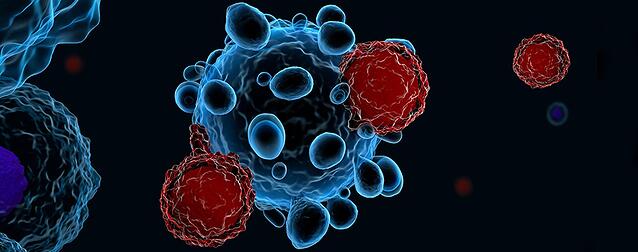CRI Report has released a report titled “Companion Diagnostics for Oncology market – Analysis of Market Size, Share & Trends for 2020 – 2030 and Forecasts to 2030” which is anticipated to reach USD 8.45 billion by 2030. According to this Report, the market is anticipated to portray a CAGR of 13.02% between 2020 and 2030. According to the report, over the projected period, rising global cancer prevalence, expanding application of companion diagnostics, and growing relevance of oncology companion diagnostics in next-generation omics are likely to drive market revenue growth.
The market report on Companion Diagnostics for Oncology market includes in-depth insights as:
- The estimated value of the market was USD 2.48 billion in the year 2020.
- Region-wise, the market in North America which held the largest market share in the year 2019, emerged as a key market for Companion Diagnostics for Oncology market.
- Based on Disease type, non-small cell lung cancer emerged as a key segment in the Companion Diagnostics for Oncology market.
- Based on End-User, Hospital segment emerged as a key segment in the Companion Diagnostics for Oncology market.
- Key players are likely to focus on product innovations and expansion through mergers to retain their positions in developed markets.
“Rising health burden of cancer throughout the globe is driving demand for personalized medications and greater awareness about improved treatment options among the patient population. Increasing focus on customized medicine has hastened the growth of companion diagnostics and co-development of medication and diagnostic solutions. Furthermore, the growing number of adverse drug reactions and lack of effectiveness has raised the necessity for precise therapeutic dose determination. Over the projected period, this is likely to contribute considerably to the market’s revenue growth.”, according to this report
Companion diagnostics is a medical equipment, usually an in-vitro device, that provides critical information for determining the safe and effective usage of another medication or biological product. Companion diagnostics is a subset of pharmacogenomics, which uses an individual’s genetic composition to predict medication response or modify treatment techniques. Oncology medicines are toxic, and only a small percentage of individuals benefit from them, according to their phenotype or illnesses. Companion diagnostics can be utilized to distinguish between people who will benefit from the medication and those who may experience negative side effects. CDx is important in oncology since it helps to restrict the population so that the best treatment may be given with the least risk.
Companion Diagnostics for Oncology market is segmented by Disease type into breast cancer, non-small cell lung cancer, colorectal cancer, melanoma, leukemia, and others. Among these, the non-small cell lung cancer category dominated the market in 2020 and is expected to have lucrative growth over the forecast period. The growing frequency of non-small cell lung cancer and the development of oncology companion diagnostics for this cancer type are both contributing to the industry’s growth.
Key Players in the Market
Some of the key players operating in the Companion Diagnostics for Oncology market are Agilent Technologies Inc., Illumina Inc., QIAGEN N.V., Thermo Fisher Scientific Inc., F. Hoffmann-La Roche Ltd., ARUP Laboratories, Abbott, Myriad Genetics Inc., bioMérieux SA, Invivoscribe Inc.
Get Valuable Insights into Companion Diagnostics for Oncology market
In the new report, CRI Report thrives to present an unbiased analysis of the Companion Diagnostics for Oncology market that covers the historical demand data as well as the forecast figures for the period, i.e., 2020-2030. The study includes compelling insights into growth that is witnessed in the market. The market is segmented by Product & Service into Product, Service. By Technology into Polymerase Chain Reaction (PCR), Next-Generation Sequencing (NGS), Immunohistochemistry (IHC), In situ hybridization (ISH)/Fluorescence in situ hybridization (FISH), Other Technologies. By Disease Type into Breast Cancer, Non-Small Cell Lung Cancer, Colorectal Cancer, Leukemia, Melanoma, Prostate Cancer, Others. By End-use into Hospital, Pathology/Diagnostic Laboratory, Academic Medical Center. Geographically, the market is segmented into North America, Latin America, Europe, Asia Pacific, and Middle East, and Africa.

